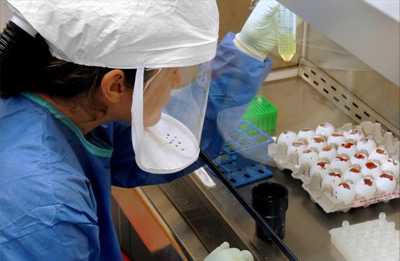AMD Projects: Improving Influenza Vaccines
Improving performance of influenza vaccines through next-generation sequencing and protein

CDC is using whole genome sequencing analysis to find ways of producing more effective vaccines than the 70-year-old, egg-based technology allows.
Flu ( influenza) is a serious disease caused by influenza viruses. Flu viruses change constantly. They are among the fastest mutating viruses known.
New vaccines to protect against flu are made each year to try to keep up with evolving flu viruses. Nearly all U.S. flu vaccines are made using egg-based technology that has been in use for more than 70 years, according to federal regulations. But this egg-based production process has a built-in potential weakness: growing flu viruses in eggs triggers mutations, especially in H3N2 viruses. These mutations can change the vaccine virus so much that the immune response caused by vaccination may not protect as well against circulating viruses. This means that vaccinated people may still get sick.
CDC is using advanced molecular detection technology to try to solve this problem. Scientists are looking at the genetic sequences of 10 generations of H3N2 flu viruses as they grow and evolve in eggs. CDC will test all of the viruses to find out what genetic changes cause a good immune response and good growth in eggs. Once the “good” genetic changes are identified, CDC will use advanced genetic techniques to try to select H3N2 viruses with those properties that can be used to make vaccine that offers better protection against H3N2 flu infection.
- Page last reviewed: August 18, 2015
- Page last updated: August 18, 2015
- Content source:


 ShareCompartir
ShareCompartir